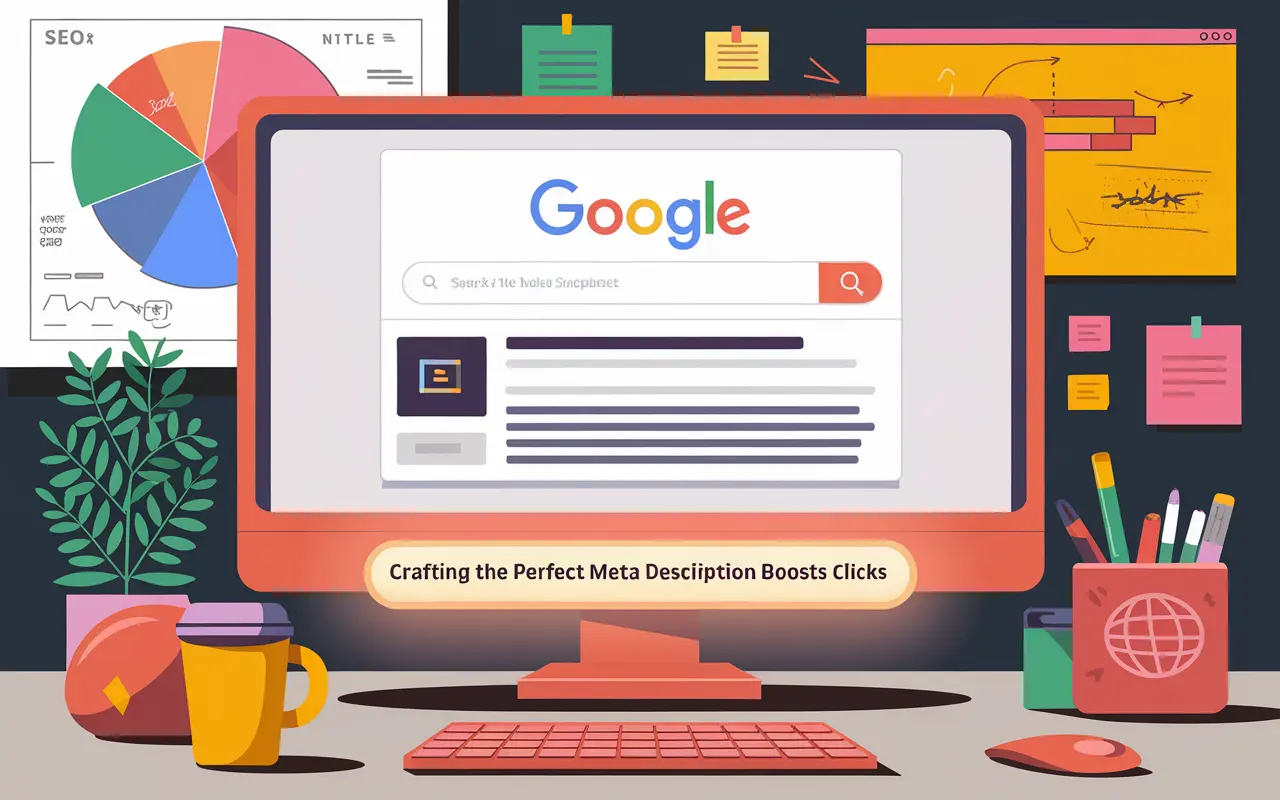What is Meta Description
A Meta Description is a short HTML snippet that summarizes the content of a webpage. Appearing under the page title in search engine results, its main goal is to attract users to click. While it doesn’t directly contribute to Google’s ranking algorithm, a well-crafted Meta Description improves Click-Through Rate (CTR), impacting your page’s performance. For any business optimizing its online presence through SEO, mastering Meta Descriptions is essential to stand out among crowded search results and drive targeted traffic.
Just like SEO helps websites gain visibility through organic search performance, Meta Descriptions are the front-facing call-to-action of that strategy, connecting search intent with your content.
Definition
A Meta Description is an HTML attribute that provides search engines and users with a brief summary of a web page. It typically ranges from 150 to 160 characters and appears directly beneath the title tag in Search Engine Results Pages (SERPs). Though search engines may dynamically generate snippets, a properly written Meta Description can guide algorithmic choices and significantly increase click-through rates. For SEOs, marketers, and developers alike, understanding this feature is essential for optimizing the discoverability and appeal of website content.
Key Takeaway
Meta Descriptions enhance your SEO by increasing click-throughs from search engines, aligning user intent with your content, and improving your website’s visibility and engagement.
Importance for SEO
Meta Descriptions play a crucial role in SEO by influencing how users interact with search listings. A compelling Meta Description acts like ad copy that persuades users to click. Even though it does not directly affect Google rankings, it contributes to improved CTR, dwell time, and reduced bounce rates — all of which can lead to better behavioral metrics and indirectly assist in rankings. It’s also one of the most visible elements of your webpage shown to users, giving you a critical chance to impress, attract, and convert.
Best Practices
Here are some best practices for crafting effective Meta Descriptions:
- Include Target Keywords: Incorporate keywords users are likely to search, making your snippet bold and easily identifiable in SERPs.
- Keep It Concise: Keep your Meta Descriptions between 150–160 characters to avoid being cut off in search results.
- Make It Compelling: Treat it like ad copy—use actionable language that encourages users to click.
- Unique for Each Page: Write a distinct Meta Description for every page to avoid duplicate content issues and offer clear value propositions.
- Reflect the Page Content Accurately: Misleading Meta Descriptions damage trust and can increase bounce rates.
How Meta Description Works
Meta Descriptions work by providing a summary of your webpage’s content directly in the HTML code through this tag:
<meta name="description" content="Your concise summary of the webpage goes here">
Search engines like Google may use this snippet in the SERP to help users decide whether to click.
Render in Search Results
If Google finds the provided Meta Description relevant to the search query, it displays it under the page title in results. Otherwise, it may generate its own snippet.
User Behavior Influence
Users read Meta Descriptions to determine relevance and intent. This copy directly affects whether users click your link or move to a competitor’s listing.
| Element | Ideal Length | Purpose |
|---|---|---|
| Meta Title | 50–60 characters | Attracts attention, summarizes page title |
| Meta Description | 150–160 characters | Encourages users to click by highlighting page content |
| URL Slug | 3–5 words | Makes URLs easy to read and keyword-focused |
Case Study – How Meta Descriptions Improved CTR by 38%
Problem: Low CTR Despite High Search Rankings
A SaaS company was ranking on the first page of Google for key terms but noticed click-through rates (CTR) were below 1.5%, severely undercutting traffic expectations.
Solution: Optimized Meta Descriptions for Each Page
The company rewrote all Meta Descriptions with targeted keywords, emotional triggers, and strong calls-to-action. Pages previously left with blank or autogenerated snippets were updated manually using best practices.
Results: 38% Increase in CTR and 25% Increase in Conversions
CTR across core landing pages improved from 1.47% to 2.03%, and monthly site visits grew by 21%. Conversions spiked due to better alignment of user expectations with actual page content.
Common Mistakes to Avoid
- Too Long Descriptions: Anything beyond 160 characters risks getting truncated, losing impact.
- Keyword Stuffing: Using multiple instances of keywords makes your description unreadable and spammy.
- Duplicate Descriptions: Using identical Meta Descriptions for multiple pages confuses search engines and harms originality.
- Misleading Content: Over-promising or writing unrelated summaries can cause high bounce rates and lost trust.
- Neglected Descriptions: Leaving your Meta Descriptions blank allows search engines to auto-generate generic blurbs that may not entice clicks.
Related Terms
Explore other glossary terms related to Meta Description:
- Title Tag: An HTML element that defines the title of a web page, appearing as the clickable headline in SERPs.
- Snippet: The summary shown in search results, often including the Meta Description.
- HTML Tags: Code used to structure a web page and define elements like metadata and headings.
Conclusion
In the SEO world, the Meta Description is often your first impression. Although it doesn’t directly rank pages, it significantly influences how users engage with your listings in the search engine results. Properly written Meta Descriptions improve your CTR, help search engines understand your content better, and enhance overall user experience. Implementing optimized Meta Descriptions across your site can yield measurable improvements in traffic and conversions. Explore more strategies and tips by visiting our Complete SEO Guide.





